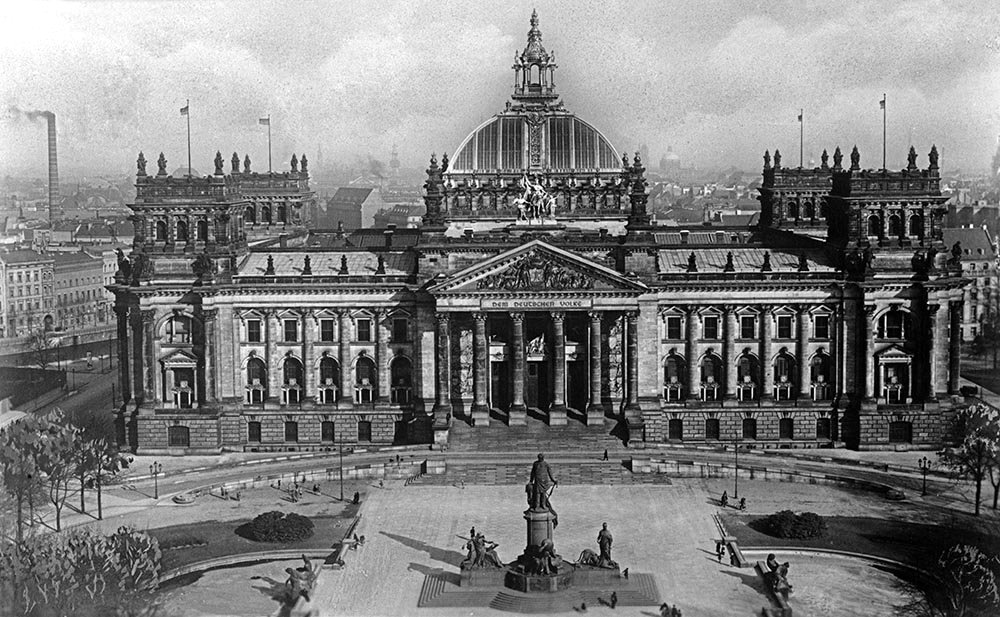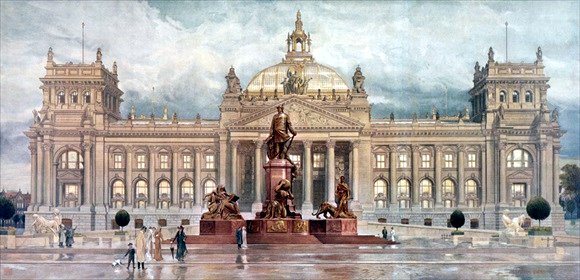Reichstagsgebäude
History
First Architectural Contest
Construction of the building began well after the unification of Germany in 1871. Previously, the parliament had assembled in several other buildings in Leipziger Straße in Berlin but these were generally considered too small, so in 1872 an architectural contest with 103 participating architects was carried out to erect a new building. After a short survey of possible sites, a parliamentary committee recommended the east side of the Königsplatz (today, Platz der Republik), which however was occupied by the palace of a Polish-Prussian aristocrat, Athanasius Raczyński.
Work did not start until ten years later though, owing to various problems with purchasing the property and arguments between Wilhelm I, Otto von Bismarck, and the members of the Reichstag about how the construction should be performed. After lengthy negotiations, the Raczyński Palace was purchased and demolished, making way for the new building.
Second Architectural Contest & Contruction
In 1882, another architectural contest was held, with 200 architects participating. This time the winner, the Frankfurt architect Paul Wallot, would actually see his Neo-Baroque project executed. The direct model for Wallot's design was Philadelphia's Memorial Hall, the main building of the 1876 Centennial Exhibition. Some of the Reichstag's decorative sculptures, reliefs, and inscriptions were by sculptor Otto Lessing. On 29 June 1884, the foundation stone was finally laid by Wilhelm I, at the east side of the Königsplatz. Before construction was completed by Philipp Holzmann A.G. in 1894, Wilhelm I died (in 1888, the Year of Three Emperors). His eventual successor, Wilhelm II, took a more jaundiced view of parliamentary democracy than his grandfather. The original building was acclaimed for the construction of an original cupola of steel and glass, considered an engineering feat at the time. But its mixture of architectural styles drew widespread criticism.
Democratic Inscriptions & Imperial Displeasure
In 1916 the iconic words "Dem Deutschen Volke" ("[To] the German people") were placed above the main façade of the building, much to the displeasure of Wilhelm II, who had tried to block the adding of the inscription for its democratic significance. After World War I had ended and Wilhelm had abdicated, during the revolutionary days of 1918, Philipp Scheidemann proclaimed the institution of a republic from one of the balconies of the Reichstag building on 9 November. The building continued to be the seat of the parliament of the Weimar Republic (1919–1933), which was still called the Reichstag.
The Reichstag Fire of 1933
The building caught fire on 27 February 1933, under circumstances still not entirely known (see Reichstag fire). This gave a pretext for the Nazis to suspend most rights provided for by the 1919 Weimar Constitution in the Reichstag Fire Decree in an effort to weed out communists and increase state security throughout Germany.

